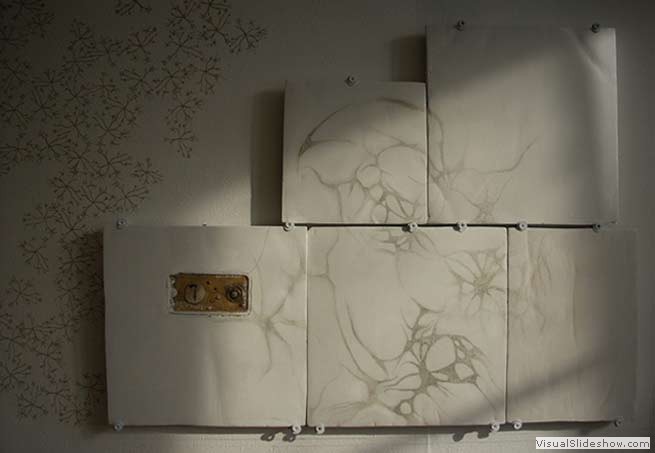Lynn Bergeson in an April 7, 2014 posting on the Nanotechnology Now website announced an upcoming ‘nano commercialization’ workshop (Note: A link has been removed),
The U.S. Department of Agriculture (USDA) and National Nanotechnology Initiative (NNI) will hold a May 20-21, 2014, workshop entitled “Cellulose Nanomaterial — A Path Towards Commercialization.” See http://www.nano.gov/ncworkshop The workshop is intended to bring together high level executives from government and multiple industrial sectors to identify pathways for the commercialization of cellulose nanomaterials and facilitate communication across industry sectors to determine common challenges.
You can find out more about the Cellulose Nanomaterial — A Path Towards Commercialization workshop here where you can also register and find an agenda, (Note: Links have been removed),
The primary goal of the workshop is to identify the critical information gaps and technical barriers in the commercialization of cellulose nanomaterials with expert input from user communities. The workshop also supports the announcement last December by USDA Secretary Thomas Vilsack regarding the formation of a public-private partnership between the USDA Forest Service and the U.S. Endowment for Forestry and Communities to rapidly advance the commercialization of cellulose nanomaterials. In addition, the workshop supports the goals of the NNI Sustainable Nanomanufacturing Signature Initiative/
The workshop is open to the public, after registration, on a first-come, first-served basis.
There is an invitation letter dated Feb. 7, 2014, which provides some additional detail,
The primary goals of the workshop are to identify critical information gaps and technical barriers in the commercialization of cellulose nanomaterials with expert input from user communities. We plan to use the outcome of the workshop to guide research planning in P3Nano and in the Federal Government.
The Cellulose Nanomaterial — A Path Towards Commercialization workshop agenda lists some interesting names. The names I’ve chosen from the list are the speakers from the corporate sectors, all eight of them with two being tentatively scheduled; there are 22 speakers listed in total at this time,
Tom Connelly – DuPont (Tentative)
Travis Earles, Technology Manager, Lockheed Martin
Beth Cormier, Vice President for R&D and Technology, SAPPI Paper
Ed Socci, Director of Beverage Packaging, PepsiCo Advanced Research
Mark Harmon, DuPont (tentative)
Kim Nelson, Vice President for Government Affairs, API
Jean Moreau, CEO, CelluForce
Yoram Shkedi, Melodea
For the most part the speakers will be academics or government bureaucrats and while the title is ‘cellulose nanomaterials’ the speaker list suggests the topic will be heavily weighted to CNC/NCC (cellulose nanocrystals, aka, nanocrystalline cellulose). Of course, I recognize the Canadian, Jean Moreau of CelluForce, a Canadian CNC production facility. I wonder if he will be discussing the stockpile, which was first mentioned here in my Oct. 3, 2013 posting,
I stumbled across an interesting little article on the Celluforce website about the current state of NCC (nanocrystalline cellulose aka CNC [cellulose nanocrystals]) production, Canada’s claim to fame in the nanocellulose world. From an August 2013 Natural Resources Canada, Canadian Forest Service, Spotlight series article,
The pilot plant, located at the Domtar pulp and paper mill in Windsor, Quebec, is a joint venture between Domtar and FPInnnovations called CelluForce. The plant, which began operations in January 2012, has since successfully demonstrated its capacity to produce NCC on a continuous basis, thus enabling a sufficient inventory of NCC to be collected for product development and testing. Operations at the pilot plant are temporarily on hold while CelluForce evaluates the potential markets for various NCC applications with its stockpiled material. [emphasis mine]
I also recognized Melodea which I mentioned here in an Oct. 31, 2013 posting titled: Israeli start-up Melodea and its nanocrystalline cellulose (NCC) projects.
A couple of final notes here, NCC (nanocrystalline cellulose) is also known as cellulose nanocrystals (CNC) and I believe the second term is becoming the more popular one to use. As for the final of these two notes, I had an illuminating conversation earlier this year (2014) about CNC and its accessibility. According to my source, there’s been a decision that only large industry players will get access to CNC for commercialization purposes. I can’t verify the veracity of the statement but over the last few years I’ve had a few individual entrepreneurs contact me with hopes that i could help them access the materials. All of them of them had tried the sources I was to suggest and not one had been successful. As well, I note the speaker list includes someone from PepsiCo, someone from Dupont, and someone from Lockheed Martin, all of which could be described as large industry players. (I’m not familiar with either API or SAPPI Paper so cannot offer any opinions as to their size or importance.) Melodea’s access is government-mandated due to research grants from the European Union’s Seventh Framework Program (FP7).
I’m not sure one can encourage innovation by restricting access to raw materials to large industry players or government-funded projects as one might be suspected from my back channel experience, the conversation as reported to me, and the speaker list for this workshop.
